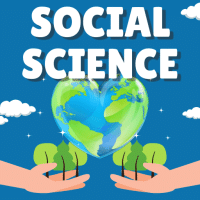Class 10 Exam > Class 10 Questions > What do you mean by water scarcity?
Start Learning for Free
What do you mean by water scarcity?
Verified Answer
What do you mean by water scarcity?
Water scarcity is the lack of sufficient available water resources to meet water needs within a region. It affects every continent and around 2.8 billion people around the world at least one month out of every year. More than 1.2 billion people lack access to clean drinking water.
It can be done by the climatic change and various human activities like deforestation and other human activities like overgrazing that is resulted to deforestation over large scale by animals desertification lack of trees etc.
 This question is part of UPSC exam. View all Class 10 courses
This question is part of UPSC exam. View all Class 10 courses
Most Upvoted Answer
What do you mean by water scarcity?
Following are the measures for preventing water Scarcity
(1) Productivity of agricultural water can be improved by using better cultivars and nutrient applicants. This can help reduce the fraction of people living in areas facing water stress by 2 per cent by 2050. Water stress is defined as a scenario “where more than 40 per cent of the available water from rivers is unavailable because it is already being used”.
(2) Irrigation efficiency can be improved by switching from flood irrigation to sprinklers or drips. However, this measure can result in soil salinisation, warns the study.
(3) Domestic and industrial water use can be reduced by cutting leakage in distribution and by improving water recycling facilities
(4) Keeping world population below 8.5 billion by 2050 though tax incentives and family planning can reduce the demand for water. But current trends indicate that this measure could be difficult to implement, says that study.
Hard measures
(5) Increasing storage in reservoirs by enlarging the capacity of existing reservoirs, by making new reservoirs and by reducing sedimentation. This strategy would require an additional 600 cubic km of additional capacity and could have “negative ecological and social impacts”
(6) Increasing the capacity or numbers of desalination plants can help in countering the problem in coastal areas. A 50-fold increase is needed to have an impact. This would require significant investments and will have energy costs. Also, waste water discharged will need to be disposed of safely.
(1) Productivity of agricultural water can be improved by using better cultivars and nutrient applicants. This can help reduce the fraction of people living in areas facing water stress by 2 per cent by 2050. Water stress is defined as a scenario “where more than 40 per cent of the available water from rivers is unavailable because it is already being used”.
(2) Irrigation efficiency can be improved by switching from flood irrigation to sprinklers or drips. However, this measure can result in soil salinisation, warns the study.
(3) Domestic and industrial water use can be reduced by cutting leakage in distribution and by improving water recycling facilities
(4) Keeping world population below 8.5 billion by 2050 though tax incentives and family planning can reduce the demand for water. But current trends indicate that this measure could be difficult to implement, says that study.
Hard measures
(5) Increasing storage in reservoirs by enlarging the capacity of existing reservoirs, by making new reservoirs and by reducing sedimentation. This strategy would require an additional 600 cubic km of additional capacity and could have “negative ecological and social impacts”
(6) Increasing the capacity or numbers of desalination plants can help in countering the problem in coastal areas. A 50-fold increase is needed to have an impact. This would require significant investments and will have energy costs. Also, waste water discharged will need to be disposed of safely.
Community Answer
What do you mean by water scarcity?
In Simple Words..
Jitni Per Day Ki Need Hai Water Ki Utna Water Bhi Na Milna
Jitni Per Day Ki Need Hai Water Ki Utna Water Bhi Na Milna
Attention Class 10 Students!
To make sure you are not studying endlessly, EduRev has designed Class 10 study material, with Structured Courses, Videos, & Test Series. Plus get personalized analysis, doubt solving and improvement plans to achieve a great score in Class 10.

|
Explore Courses for Class 10 exam
|

|
Similar Class 10 Doubts
What do you mean by water scarcity?
Question Description
What do you mean by water scarcity? for Class 10 2024 is part of Class 10 preparation. The Question and answers have been prepared according to the Class 10 exam syllabus. Information about What do you mean by water scarcity? covers all topics & solutions for Class 10 2024 Exam. Find important definitions, questions, meanings, examples, exercises and tests below for What do you mean by water scarcity?.
What do you mean by water scarcity? for Class 10 2024 is part of Class 10 preparation. The Question and answers have been prepared according to the Class 10 exam syllabus. Information about What do you mean by water scarcity? covers all topics & solutions for Class 10 2024 Exam. Find important definitions, questions, meanings, examples, exercises and tests below for What do you mean by water scarcity?.
Solutions for What do you mean by water scarcity? in English & in Hindi are available as part of our courses for Class 10.
Download more important topics, notes, lectures and mock test series for Class 10 Exam by signing up for free.
Here you can find the meaning of What do you mean by water scarcity? defined & explained in the simplest way possible. Besides giving the explanation of
What do you mean by water scarcity?, a detailed solution for What do you mean by water scarcity? has been provided alongside types of What do you mean by water scarcity? theory, EduRev gives you an
ample number of questions to practice What do you mean by water scarcity? tests, examples and also practice Class 10 tests.

|
Explore Courses for Class 10 exam
|

|
Suggested Free Tests
Signup for Free!
Signup to see your scores go up within 7 days! Learn & Practice with 1000+ FREE Notes, Videos & Tests.

























